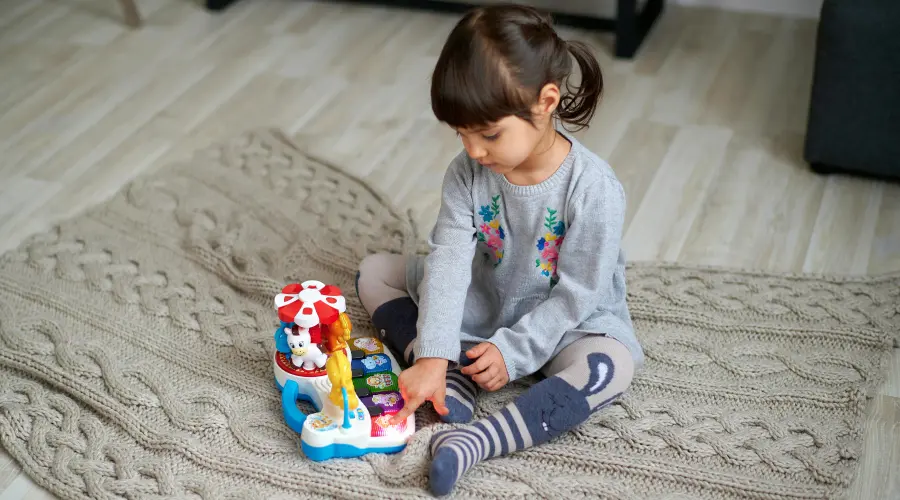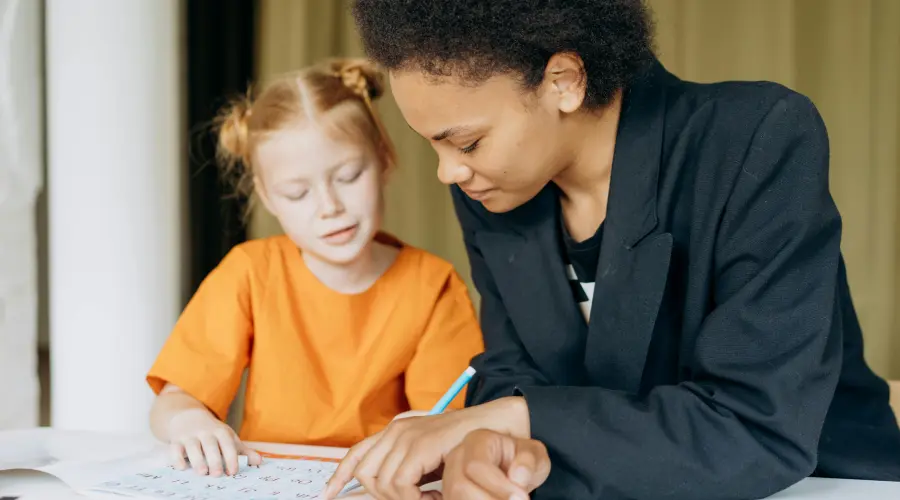settings
children
With Famly since

Let's dive right in with an example.
Tommy is feeling very angry because Lucy just picked up the book he planned to read for the class activity.
Tommy yells in Lucy’s face as he rips the book from her hands, “I need that book. It’s mine!”
Then, the teacher says, “Tommy, go to the time-out corner right now!”
Let’s pretend for a moment that we are able to step inside Tommy’s mind, and hear what he is thinking as he sits in the time-out corner:
- I am all alone.
- I feel angry and scared.
- I wish someone would come help me calm down.
What I have described above is known as 'exclusionary discipline.' A time out is a classic example of one of these outdated discipline strategies, where toddlers and young children are removed from their current setting, and isolated as a form of punishment for what we perceive as bad behavior.
Time-outs can cause feelings of isolation and rejection, particularly for young children, which is arguably harmful for early childhood development. A timeout is sending the child away to essentially deal with tough emotions on their own.
Even if we present a time out in a caring manner, we are disciplining a child for expressing their emotions. When we do that, the child learns that we are only interested in supporting them when they have their behavior together. Young children have not yet learned how to support themselves in coping with big emotions — and being punished for being unable to show some desired behavior makes children feel bad, without helping them grow.
When we see bad behavior on the outside, it’s the adult or educator's job to be detectives, to uncover and understand what's happening underneath the surface. This cannot happen in the social isolation of a time out.
The big ideas

In this article, we’ll look at why exclusionary discipline, like time outs for toddlers and young children, are not a supportive response to children struggling with challenging behaviors. Read on to explore more supportive, long-term ways that you can help children learn to know, understand and manage their feelings.
Why a time out doesn't encourage appropriate behavior
When a child is behaving in undesirable ways and they are asked to leave the classroom, it often results in feelings of embarrassment, isolation and low self esteem. Excluding children during their toughest, and probably confusing, moments can create negative feelings about school - particularly school no longer being a safe place.
On the surface, a time out is a consequence for a child's behavior, but by isolating them, we are actually asking a child to self-regulate their tough emotions - something that young children (even some adults!) do not yet have the skills to be able to do. There are much more effective, healthy and appropriate alternatives to support children experiencing tough emotions and undesirable behaviors - and it’s our job to teach them how best to cope.
We know that the experience of processing emotions is a vulnerable and highly physical one. Fidgety hands, sweaty palms and awkward repositioning are all examples of attempts to regulate your sensory system while attempting to regulate emotions. The direction to "sit quietly" ends up denying children a lot of self-regulation opportunities. Would you be able to sit still if you were experiencing uncomfortable and tough emotions? I definitely wouldn't.
It’s important for our classroom environments to be learning spaces where children can learn how to regulate their tough emotions; so let’s consider having a variety of tools handy for learning and practicing regulation skills.

Reset spaces: your healthy alternative to the time out
Instead of a time out corner, you might consider a ‘reset space.’ These are safe physical areas inside your classroom, which allow children an opportunity to work through emotions, , problem solve, reflect, and calm themselves down so they can move on. This all occurs within the classroom, without the child leaving the learning space.
Reset spaces are not considered a consequence. It is not a place outside of the classroom, or a place of isolation. Instead, it’s a classroom resource, a place inside the classroom that children can use when they feel they need it.
Reset spaces give your early childhood education (ECE) classroom a physical space for children to label feelings, regulate emotions with healthy coping skills, reflect, move on, then return to the larger group. Reset spaces are also a place where an adult can be there with “time-in” to support the student with labeling, expressing, and regulating tough emotions.
These spaces should contain developmentally appropriate tools for the children. For instance:
- Hands on tools: Fidgets, squeeze toys, coloring books or markers and paper, books, journals, and puzzles.
- Visuals: Posters with visual reminders on ways to calm, including: breathwork techniques, movement options, and an emotion wheel.
- Strategies: Breathwork, sharing feelings, and headphones with calming music.
- Adult support: Children might want a trusted adult to feel safer, and get help with expressing themselves. Adults can come in at this point as co-regulators; a supportive, soothing, calm presence prepared to help.

Reset spaces support co-regulation in ECE
You might think of a reset space as a physical expression of co-regulation.
Here, educators can support children with expressing their emotions, naming them, while feeling validated. Then adults can help the child utilize coping skills to find their calm. Only at this point is the child able to reflect and problem solve with the help of an adult. Most often, a child will talk and process, and it’s time for you to give them a space of comfort and safety, listen without judgment, empathize, then help them reflect and move on.

How do we create reset spaces in our childcare?
Let’s look at the steps for how you might establish a reset space in your own early learning environment.
- Introduce the purpose of the space.
- Ask children to help with the design of the space.
- Name the space, so children can easily refer or ask to go to it.
- Customize the space based on the needs of the children.
- Gradually introduce, then add new items. Be careful not to overwhelm them with too many possible coping skills.
- Discuss and model tools and strategies for calming tough emotions. Do this when times are calm. Please do not wait for the tough moments to try introducing someone new.
- Post visuals that show and remind students of a variety of coping skills.
Once you’ve set up your space, it’s time to agree on how to use it.
- Teach the expectations of the space.
- When are students able to use it?
- What can be done in the space to help them express emotions and feel calm?
- Give everyone a turn to use and explore the space. This eliminates any fear of using the space, normalizes the space as one for everyone to use and gives students practice on how to use the place appropriately.
How to support children through positive reinforcement
As an adult, you can help children build their emotional skills and self-regulation through three key avenues:
- Teach – We must teach explicit skills for coping with tough emotions. This begins with teaching children to become self-aware; checking-in with body cues to understand what their feelings are on the inside. Broadening children’s emotional vocabulary to strengthen their ability to express how they are feeling; which in turn gives adults a better understanding of the child’s needs.
- Model – Adults are the most important models for the children in our lives. We must model what we want to see from them. Show children that your behaviors align with your core values.
- Tools – Provide developmentally appropriate tools for the children in your care. Choose tools that are tangible, visually enticing, and the best size for their hands.
Young children need support in learning how to cope with tough emotions, which we often see coming out as undesirable or bad behaviors. If we're here to encourage appropriate "good" behavior, we need to refrain from isolating them to a time out space to “figure it out” on their own.
When we set up reset spaces within our classrooms that are accessible to everyone, we are giving children tools they need at that moment. Over time, this will improve their ability to self-soothe and self-regulate on their own.
We are nurturing life-long skills in self-awareness as they begin to understand their own feelings, self-management as they begin to learn how to manage tough emotions, and social awareness as they begin to sense how others are feeling and grow in empathy and compassion. They cannot do this alone; we are their teachers and models to help them in their early years development.
Free downloadable Early Childhood resources
Explore our library of longer-form books, guides and editable templates - all free to download.
Explore free resources









